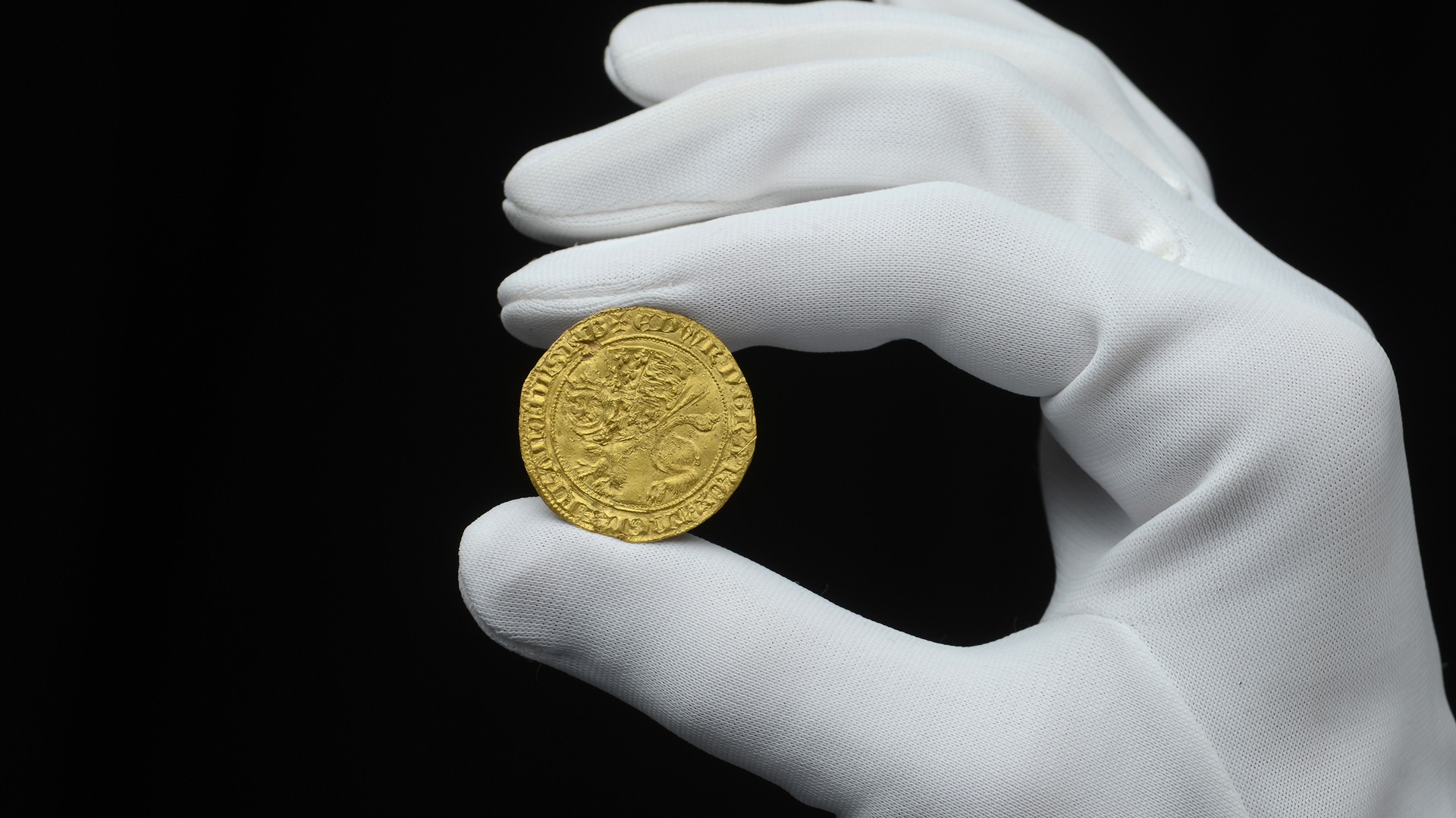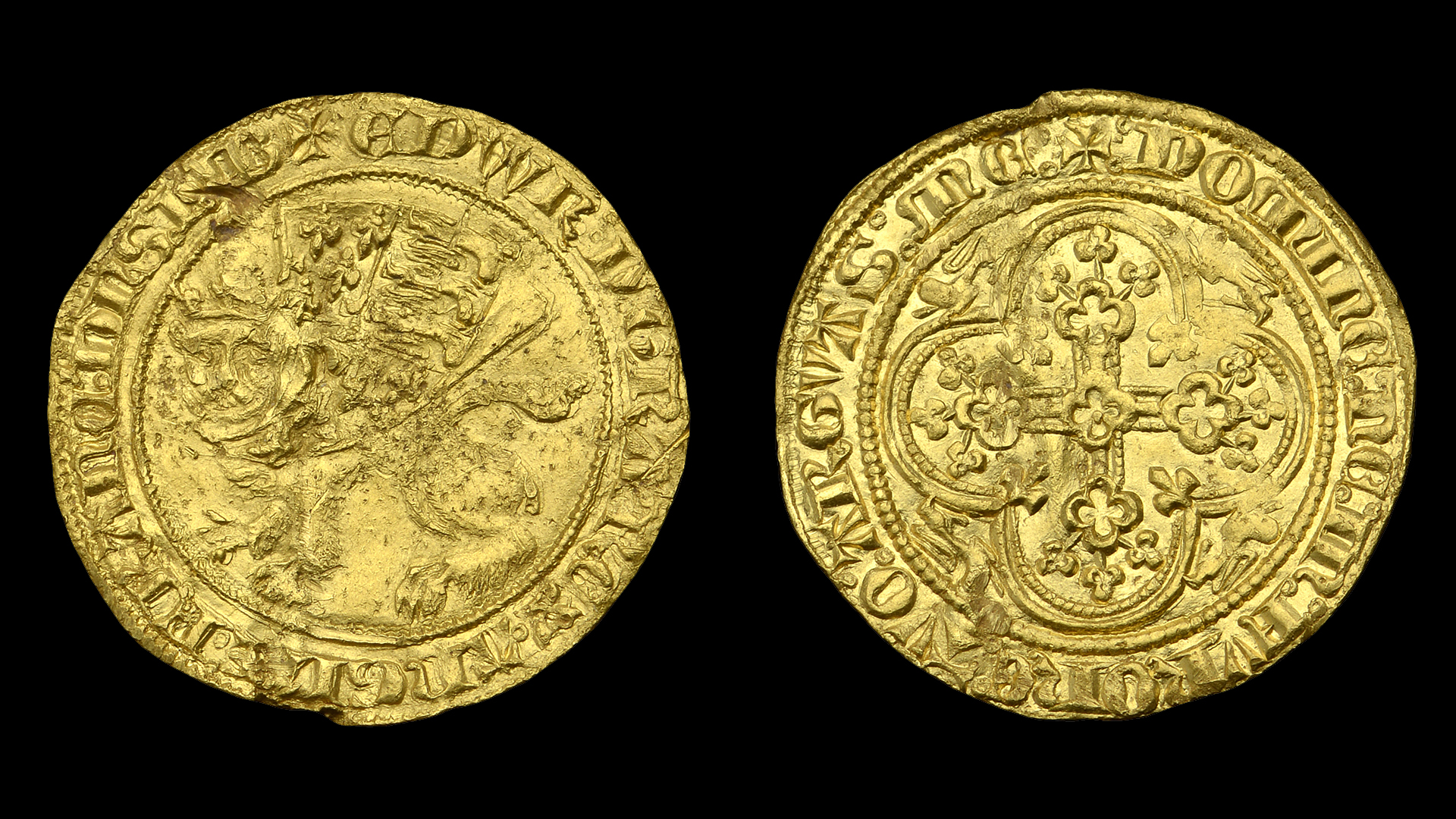
An extremely rare gold coin stamped with a leopard sitting upright and wrapped in a banner was unearthed by a metal detectorist in England and is heading to the auction block.
The coin was made from gold in the Tower of London. It looks nearly brand-new and is one of only a few remaining leopard coins from a failed currency experiment by King Edward III.
The coin was discovered in North Norfolk, and only four other coins are known, two of which are housed in the British Museum in London. DNW representatives said in a statement that the Norfolk leopard coin will be auctioned on March 8 and is expected to fetch up to 180,000 British pounds.
The most amazing coin treasures were found in 2021.
RECOMMENDED VIDEOS FOR YOU...
In the 13th century, France and Italy began producing gold coins, and in the 14th century, England's Edward III made three types of leopard coins. All English coins were silver at the time.
A crowned leopard head was first used by King Edward I in 1300, as the king's mark of authenticity on silver and gold, and leopard designs appeared during the 14th century on flags and shields belonging to British royalty and their supporters.

There were different designs on the leopard coins. Mills told Live Science that the face of a double leopard had a seated king, a leopard coin had a stylized leopard on the front and a helm was decorated with a knight's helmet.
Edward III said that a leopard would be worth 3 shillings, a double leopard would be equal to 6 shillings and a helm would be worth 18 pence. The government withdrew the coins from circulation because they were expensive to produce, did not easily divide into other denominations, and were thought to be overvalued compared to silver.
How much could a person buy with one golden leopard in 1343? The purchasing power of 36 silver pennies at the time was about 2,000 British pounds, which is $2,470 today.
It would have bought you a single sheep with a gallon of wine and a few pennies.
It was originally published on Live Science.